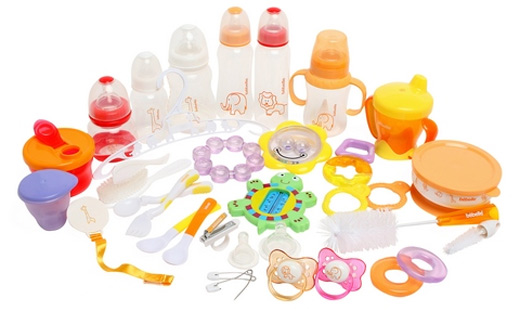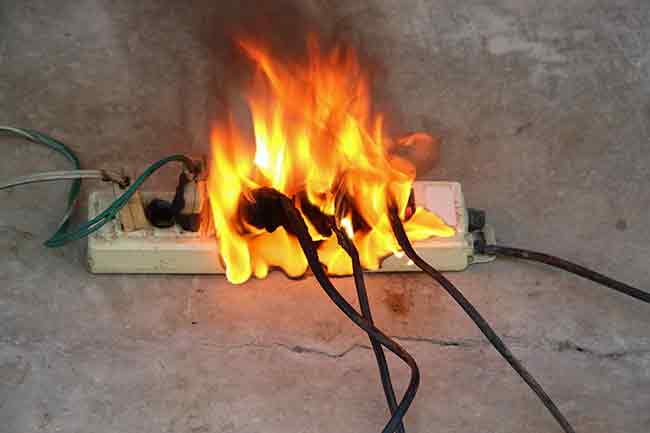This guide is intended to help you make safer choices when using plastics. There are several types of plastics – some being safer than others. Plastic products are commonly marked with a number enclosed by the recycling symbol, which is typically found on the bottom of the product. This symbol is used to identify the plastic and recyclability of the product. In general plastic products marked with the numbers 2, 4 and 5 are the safer choices.
The following graphic is a quick summary of the plastics labels and their “threat” level.








The following sections provide information on each type of plastic.

Plastic #1 – PET or PETE stands for polyethylene terephthalate, a plastic resin and a form of polyester.
Where is PETE found?
PETE is commonly used to package:
- Cosmetics
- Household cleaners
- Water
- Juice
- Soft drinks
- Salad dressings
- Oil
- Peanut butter
Health Concerns
Studies have found levels of antimony (a toxic chemical) leaching from water bottles that have been placed in heat for prolonged times. Although PETE does not contain BPA or Phthalates, it’s always best to make sure that your water bottles are not temperature abused. PETE plastic should not be reused because cleaning detergents and high temperatures can cause chemicals to leach out of the plastic. Plastic #1 is only intended for one time use.

High-Density Polyethylene
Plastic #2 – High-density polyethylene (HDPE) is a polyethylene thermoplastic made from petroleum. HDPE is hard, opaque and can withstand somewhat high temperatures.
Where is HDPE found?
HDPE is used in the manufacturing of toys, and the packaging of:
- Laundry detergent
- Milk jugs
- Folding chairs & tables
Health Concerns
No known health concerns.

Polyvinyl Chloride
Plastic #3 – Polyvinyl chloride (PVC) is a thermoplastic polymer. Through the use of phthalates, a plasticizer, it can be made softer and more flexible. Read about the harm of phthalates here.
Where is PVC found?
- Shower curtains
- Cling wrap
- Waterbeds
- Pool toys
- Inflatable structures
- Clothing
- Vinyl IV bags used in neo-natal intensive care
PVC can also be found in car interiors and vinyl flooring, resulting in the release of toxic chemicals into the air.Health Concerns
PVC is one of the toxic plastics that should be avoided.
- Purchase a shower curtain made from organic hemp, bamboo or PEVA. PEVA (polyethylene vinyl acetate) is a non-vinyl (PVC-free), chlorine-free, biodegradable plastic.
- Air out the car before getting in.
- Avoid using cling wrap made with PVC.
- Avoid inflatable structures, air mattresses, and toys made with PVC. Note: Aerobed pakmat and Aerobed Ecolite are PVC and phthalate free.
- Choose all baby toys, pool toys, and bath toys that are labeled to be PVC, Phthalate and BPA free.

Low-density polyethylene
Plastic #4 – Low-density polyethylene (LDPE) is a thermoplastic made from petroleum. It can be found translucent or opaque. It is flexible and tough but breakable.
Where is LDPE found?
- Juice and milk cartons (as the water-proof inner and outer layer)
- Most plastic grocery bags
- Some packaging material
Health Concerns
No known health concerns.

Polypropylene
Plastic #5 – Polypropylene (PP) is a thermoplastic polymer. It is strong, tough, has a high resistance to heat and acts as a barrier to moisture.
Where is Polypropylene found?
- Yogurt & margarine tubs
- Plastic cups & baby bottles
- Kitchenware, microwavable plastic containers and lids
Health Concerns
Most PP are microwavable safe and dishwasher safe. NOTE: microwavable/dishwasher safe only means that the plastic will not warp when heated. It does not imply that it is a healthy practice. A better alternative is using glass containers to heat foods and to hand wash plastic instead of using the dishwasher.

Polystyrene
Plastic #6 – Polystyrene (PS) is a petroleum-based plastic. It can either be hard or used in the form of styrofoam.
Where is Polystyrene found?
Polystyrene is widely used in packaging materials and insulation. Some common items include:
- Disposable cutlery
- CD and DVD cases
- Egg cartons
- Foam cups & to-go foam packaging from restaurants.
Health Concerns
According to the Foundation for Achievements in Science and Education fact sheet, long term exposure to small quantities of styrene can cause neurotoxic (fatigue, nervousness, difficulty sleeping), hematological (low platelet and hemoglobin values), cytogenetic (chromosomal and lymphatic abnormalities), and carcinogenic effects. Styrene is classified as a possible human carcinogen by the EPA and by the International Agency for Research on Cancer (IARC).
Ways to avoid Polystyrene:
- Package left over foods from a restaurant in your own glass or stainless steel containers.
- Avoid styrofoam cups or plates and instead use stainless steel, glass, or bamboo products.
- Bring your own silverware to fast-food restaurants instead of using their plastic ones.

OTHER (Varies)
Plastic #7 can be a little tricky as it stands for “Other” which may or may not contain BPA. It is commonly used to label Polycarbonate (PC). The letters PC may be present with the recycling symbol, which would indicate that the product is made with polycarbonate.
Polycarbonate is derived from BPA. Read more about the harm of BPA here.
Where is Polycarbonate found?
- Electrical wiring
- CD/DVD cases
- Baby bottles
- 3 and 5 gallon reusable bottles
Health Concerns
BPA has been found to be an endocrine disruptor. Choose bottles made with the #1, #2, #4, or #5 recycling codes.
Safest Choices
In conclusion, plastic products marked with the numbers 2, 4 and 5 are the safer choices. Regardless of what plastic you use, avoid exposing your plastics to high temperatures (microwave, dishwasher) and use mild detergents for cleaning. Since there is no guarantee that plastics will not leach out harmful chemicals, I suggest playing it safe by trying to avoid plastic when possible.





Leave a Reply
Want to join the discussion?Feel free to contribute!